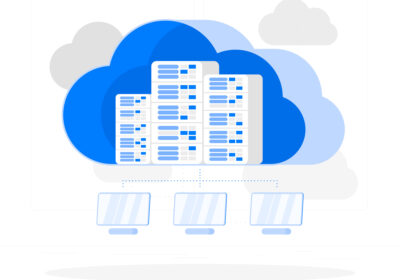The e-commerce industry is experiencing explosive growth. With a seemingly endless stream of online shoppers, businesses are recognizing the immense potential of establishing a strong online presence. But building a successful e-commerce store requires a solid foundation – e-commerce software development. This blog serves as a comprehensive guide, delving into everything you need to consider when venturing into the world of e-commerce software development.
Understanding E-commerce Software Development
E-commerce software development encompasses the creation of applications and platforms that enable online businesses to manage their entire sales cycle. This includes crafting the user-friendly storefront (front-end development) customers interact with, building the server-side functionality that powers the store (back-end development), and implementing essential features like product listings, shopping carts, secure payment gateways, and order tracking systems. Additionally, integrating a Content Management System (CMS) allows you to manage website content – product descriptions, blog posts, and marketing materials – easily and efficiently. In today’s mobile-first world, ensuring your e-commerce store is optimized for various devices (mobile responsiveness) is no longer optional but a necessity.
Benefits of Custom E-commerce Software Development
While off-the-shelf e-commerce platforms exist, custom development offers distinct advantages. Custom software can be tailored to your specific business needs, accommodating unique requirements or rapid growth that might strain off-the-shelf solutions. You can design a user interface that aligns perfectly with your brand identity and provides a superior shopping experience for your customers. Custom development empowers you to integrate seamlessly with existing business systems (inventory management, CRM) for streamlined operations and improved data flow. Most importantly, custom software allows you to implement features and functionalities that differentiate your store from competitors, catering to a specific niche or market demand.
The E-commerce Software Development Process
Developing e-commerce software involves a series of crucial steps. The first step is requirement gathering and planning. Here, you’ll clearly define your project goals, target audience, desired features, and functionalities. A comprehensive project plan outlining timelines, budget, and resource allocation is crucial for a smooth development process.
If opting for a custom solution built on an existing e-commerce platform (e.g., Magento, WooCommerce), you’ll need to select the platform that best aligns with your technical requirements and budget in this stage.
Next comes User Interface (UI) and User Experience (UX) Design. This involves crafting a user-friendly and visually appealing interface that facilitates easy navigation, product discovery, and checkout processes. Prioritizing mobile responsiveness ensures an optimal user experience across devices.
With a well-designed interface in place, the development team focuses on the back-end development. This is where the core functionalities of your e-commerce store are built, including product management, inventory control, order processing, payment gateways, and secure customer data management.
Following development comes integration and testing. Here, your e-commerce platform is integrated with any necessary third-party services (payment gateways, shipping providers) and subjected to rigorous testing to ensure functionality, security, and performance across different browsers and devices.
Once everything is tested and polished, it’s deployment time! Your e-commerce platform is deployed to a web hosting server, and your online store is launched. Developing a comprehensive marketing strategy to drive traffic and attract potential customers is crucial at this stage.
The final step is ongoing maintenance and updates. Regular updates with security patches, bug fixes, and new features are essential to maintain optimal performance and address evolving user needs.
Essential Features for E-commerce Software
Several key features are essential for your e-commerce platform to thrive. Customers expect intuitive product listings with high-quality product images, detailed descriptions, variations (size, color), and clear pricing. A user-friendly search and filter functionality empowers them to easily find the products they’re looking for. A secure checkout process with various payment gateway options is paramount. Offering customer account management allows for easy order tracking, wishlists, and personalized shopping experiences. Maintaining accurate inventory levels with a robust inventory management system avoids stockouts and customer dissatisfaction. An order management system efficiently tracks orders, provides order status updates, and keeps customers informed.
Choosing the Right E-commerce Development Partner
Selecting the right e-commerce development partner is crucial for project success. Look for a development company with a proven track record of building successful e-commerce platforms in your industry or with similar functionalities. Ensure the development team possesses the technical skills and resources necessary to bring your vision to life, including expertise in relevant programming languages, frameworks, and e-commerce platforms (if applicable). Effective communication and project management are essential. Choose a partner who prioritizes clear communication, keeps you informed throughout the development process, and utilizes established project management methodologies. Consider your future growth plans. Partner with a developer who can build a scalable solution that can accommodate your business’s expansion over time.
Building Your E-commerce Dream
Developing e-commerce software requires careful planning, strategic decision-making, and selecting the right development partner. By understanding the core aspects, essential features, and development process, you can embark on your e-commerce journey with a clear roadmap to success.By leveraging the insights from this blog and conducting thorough due diligence, you can build a robust e-commerce software foundation that empowers your online store to thrive in the ever-evolving digital marketplace. As you embark on this exciting journey, remember that success hinges on understanding your target audience, prioritizing a seamless user experience, and continuously adapting to the ever-changing e-commerce landscape.
E-commerce Fraud Detection: Shielding Your Business
The e-commerce world is booming, but with this growth comes an increased risk of fraudulent activity. Cybercriminals are constantly devising new methods to exploit vulnerabilities in online stores. Fortunately, there are steps you can take to protect your business and your customers. This blog delves into the world of e-commerce fraud detection, equipping you with the knowledge to safeguard your online store.
Understanding E-commerce Fraud
E-commerce fraud encompasses a variety of deceptive practices aimed at stealing money or financial information from online businesses or customers. Here are some common types of e-commerce fraud:
- Credit Card Fraud: Fraudsters use stolen credit card details to make unauthorized purchases.
- Chargeback Fraud: Fraudsters claim they never received an item or received a significantly different item than what they ordered, requesting a chargeback from their bank.
- Account Takeover Fraud: Criminals gain access to existing customer accounts to make fraudulent purchases.
- Friendly Fraud: This occurs when a legitimate customer disputes a charge with their bank, often due to buyer’s remorse or misunderstandings.
The Impact of E-commerce Fraud
E-commerce fraud can have a significant negative impact on your business. Financial losses due to fraudulent transactions can eat into your profits. Additionally, fraudulent chargebacks can damage your relationship with payment processors and increase processing fees. Furthermore, a reputation for online fraud can deter legitimate customers and harm your brand image.
Strategies for E-commerce Fraud Detection
There are several strategies you can employ to mitigate the risk of e-commerce fraud:
- Implement Address Verification System (AVS): AVS verifies the billing address provided by the customer with the address on file with the card issuer.
- Utilize Card Verification Value (CVV): CVV is a three-digit security code located on the back of credit cards. Requesting CVV during checkout adds an extra layer of security.
- Employ Fraud Scoring Systems: These systems analyze various data points associated with a transaction (billing address, IP address, order history) and assign a fraud risk score. Transactions exceeding a certain threshold can be flagged for manual review.
- Monitor for Velocity Changes: Be wary of sudden spikes in order volume or order values, as this could indicate fraudulent activity.
- Geolocation Verification: Compare the customer’s IP address with their billing address to identify potential discrepancies.
Conclusion: Building a Secure E-commerce Environment
By implementing these e-commerce fraud detection strategies and prioritizing security best practices, you can create a safer online shopping environment for your customers and mitigate the risk of financial losses for your business. Remember, vigilance is key. Continuously monitor your e-commerce platform for suspicious activity and stay informed about evolving fraud tactics to stay ahead of cybercriminals. By prioritizing security, you can foster trust with your customers and ensure the long-term success of your online store.





